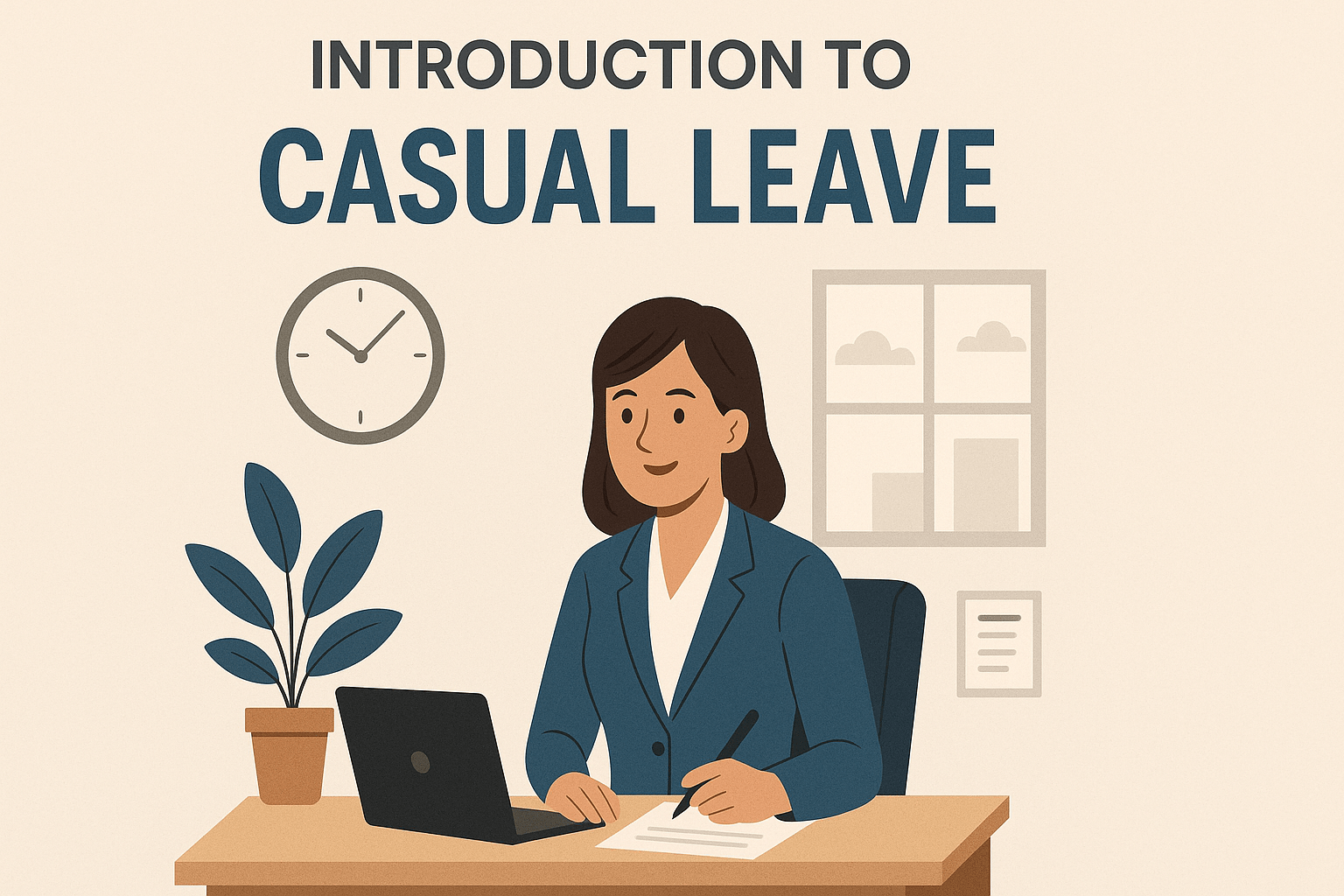The leave policy is a written document that provides guidelines for employees on their eligibility, benefits and procedures involved in applying for leave. It’s a formal statement of an employer’s intent regarding leave administration. It covers both paid and unpaid leave granted by an employer to its employees. It also includes provisions covering sick leave, maternity or paternity leave, long term medical care absence, vacation leave etc.
Leave policy can be designed in one of the following forms depending on the needs of your organisation
1) Provisional/ Informal Leave Policy – In this type of policy, leave is given on an informal basis, which means from time to time without any formal communication. Informal procedures have no permanency about them.
2) Eligibility only Leave Policy – This kind of leave is governed by eligibility criteria written in the policy document. Opting for this policy may provide a problem to your company in future if there is no specific feedback mechanism available about the employee’s behaviour, performance etc., existing. It might also cause many problems if some leave like maternity leave ( under Maternity Benefit Act 1961 )is not included, which is legally compulsory to provide. So it must be well worded and define both eligible & ineligible. The leave should be described in straightforward terms avoiding any jargon or technical words.
3) Full-fledged Company Leave Policy – The full-fledged Company Leave applies to all types of leave, including sick leave, medical leave, maternity leave, paternity / childcare leave and long term medical care. As it includes all kinds of leave, the policy must be comprehensive enough to avoid confusion or problems for employees or employers. It should cover every possible situation that may arise from time to time. This type of policy document is also called a Code Of Conduct. The word ‘Code’ implies that the company’s collective conscience enlists its ethics & moral values towards employees.
Leave Policy has five components
1) Eligibility Criteria – It describes who can take leave?
2) Leave Covered – Specifies details about leave under respective categories, e.g., Maternity leave, Medical leave etc.
3) Medical Certificate – A written confirmation from authorised medical personnel that the employee needs leave.
4) Proof Of Leave (PILON) – It includes documents like Birth Certificate, Death certificates etc.,
5) Procedure To Apply For Leave- This will describe who can apply for leave? When can they apply? What is the supporting documentation needed to justify entitlement? On what authority the leave will be sanctioned?
There are specific points to keep in mind when designing a leave policy
1) Eligibility Status Of Leaves – Each leave is governed by its specific eligibility criteria and should not overlap or conflict with each other. All types of leave must be included within the same policy document, e.g., Maternity leave (under Maternity Benefit Act 1961) must be included, but unpaid medical leave under the health Insurance scheme of Employees ‘ State Insurance Corporation should not be included. Similarly, medical leave should be governed by its eligibility criteria and not any other type of leave.
2) Documented Policy – The policy document must include complete leave details like duration, salary/allowance for leave, renewal, etc. It consists of both paid and unpaid leave.
3) Scope Of Leave – Eligibility criteria define the leave’ scope, e.g., casual daily wage employees are not eligible for maternity leave & long term medical care absence.
4) Leave Periods – There could be different types of leave covered in one single policy document. Casual Daily Wage employees may be eligible for Casual Leave, In-service leave but not for PF & ESI payments.
5) Leave Combination/ Overlap – It should be kept in mind that only one type of leave is allowed at a time. If an employee opts for maternity, then there is no provision to take any other kind of leave and vice versa; he/ she can’t take two different types of leave simultaneously.
6) Renewal Of Leave – Who can renew/ authorise further extension? What is the process? What will be its effect on salary/allowance etc.?
7) Approving Authority – One person should not have the power to approve all types of leave.
8) Documentation – The policy should not be exhaustive, including all types of details, leave dates, leave combinations etc.; it cannot cover every possible situation that may arise. Documents like Birth Certificates, Death certificates are susceptible & private.
9) Policy Review & Updation – Unlike the company registration document, which requires regular updation / approval by governing bodies, the Leave Policy is a living document that can be changed/modified anytime as per requirement. Once it is adopted/ approved, the same should be implemented in letter & spirit.
Role Of The HR Department
When you have more than 30 employees, then the role of the HR department becomes crucial in implementing a leave policy. It is recommended to appoint a dedicated HR person who can oversee & supervise all activities related to leave, e.g., coordination between concerned personnel, processing applications etc.,
Leave Management System:
A policy can be implemented without any software or leave management system, but it imposes a lot of administrative burden on managers and employees. It is better to have some workflow management system for cross-departmental issues like maternity, paternity, medical leave etc.,
Notification Of Implementation:
An organisation can implement its leave policy at different phases, e.g., post-induction training, six months after joining, three years after joining, one year after joining, etc.
Final takeaway:
A policy must include all leave available to an employee at the company level, e.g., sick leave, casual absence without prior approval, casual absence with prior consent. Still, without prior intimation, It may exclude a few relevant leave like funeral & bereavement leave that is unique to the employee’s category or department. There is no fixed format for drafting/developing a leave policy; it depends on the nature of an organisation, level of employees, corporate culture etc.




